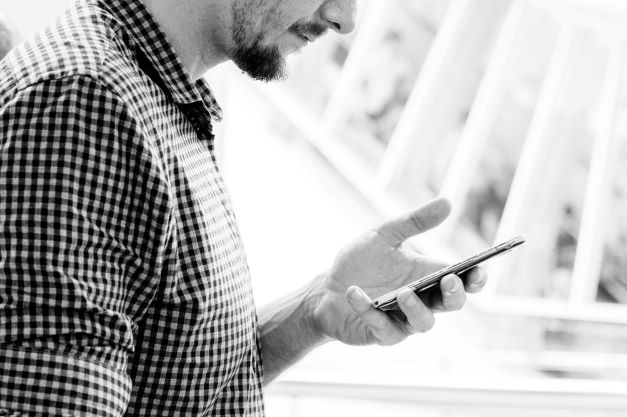Can we “like” our way to greater wisdom and peace? Or even to just to some deeper measure of happiness? These questions came to me as I was scrolling through Instagram posts the other day. On my Neural Buddhist account, I mainly follow people who focus on Zen and meditation, and science-related accounts that I find interesting from a Buddhist perspective. On any given day, I come across many meaningful, heartfelt posts by teachers and by other practitioners who I respect.

For example, the short poem below, by punkrocksadhana, struck me as a beautiful image of the very concrete ways that all things in this world are deeply interconnected:
In my own posts on Instagram and Facebook, I have tried to share teachings that I have found personally meaningful, and which I think might be helpful to others. And, I’ve also shared posts that distill some of my essays on my own Zen practice (like the post below). I am left wondering, though, what the benefit of this kind of engagement on social media is for our practice, much less for our mental health in general.
Over the past few months, my interactions with others on Instagram and Facebook have mainly been “liking” or “loving” posts, or sharing a post as a story. In total, these interactions have been fleeting, delicate moments. Like a bubble hanging in the air, they may be beautiful, but most disappeared without leaving a lasting trace.
I wrote recently about the connections between rituals and habits, and the importance of engaging fully in our daily habitual behaviors, rather than falling into autopilot. But, when I turned my attention back to my own use of social media, I found that I was often not acting mindfully, but had fallen more into a mindless habit. And, I was not really surprised at this fact – like many, I usually expect that high levels of use of social media could be unhealthy (or at least, is not likely to make people happier, on average!). So, how then should we approach social media? And, is social media fundamentally unwholesome (in the sense of supporting our practice)?
It does seem that the core mechanics that draw us in to engage with social media are not ones that naturally support our practice. As we look around Facebook, Instagram and similar platforms, we are most likely to find those voices that appeal broadly, and that appeal to those who we already agree with. And, our attention, and our very sense of value, can be drawn in toward posts that receive a strong response. This can certainly be unhealthy, as it can skew our sense of what messages are meaningful, or one may become distraught to find that their own heartfelt expressions receive little or no response. And, as I found in my own life, the type of engagement we see may also be superficial, fleeting.
What then are our options? We could certainly pull back from these social spaces, and work to invest our energy into healthier, more humane forms of interaction. That may be the right answer for many people, but I have remained on Facebook and Instagram simply because they are places where many people spend some of their time. But, if we stay in these spaces, how can we become habitually mindful of the ways that we can be trapped by social media, and work to promote more wholesome engagement?
In my own practice, I have made a few changes to how I use social media (and, I am focusing here especially on my neuralbuddhist accounts – for my personal accounts, I appreciate this advice from a post on Tiny Buddha).
First, in all of my accounts, I have hidden the number of “likes” that posts receive (if you are interested, here are some tips for how to turn off likes for Instagram and Facebook posts). These options are not perfect, but it can be very helpful to not immediately see the number of people who have “liked” a post.
Second, when I scroll through social media, I try to hold the intention to engage deeply with at least one post. I may “like” several posts on Instagram, but I also to make a comment that responds to one post that resonates with me. And, I consider how I can take that teaching with me into the rest of my day. Instead of repeating the habit of superficial engagement, I am working to build a new habit of seeing these posts as a call to mindfulness. This helps connect my time on social media to the whole of my practice.
Third, for the posts I make on social media, I am working to focus my attention to my goals. Instead of focusing on the reactions (the number of likes and such) on Facebook or Instagram, I am focusing on the number of people who engage more deeply – commenting (thoughtfully!) and those who actually engage further. It doesn’t matter, really, how many people reacted to a post.
The key question for me is how many people interacted more deeply – commenting on the post, and finding the longer essays (such as this one) that the post attempts to summarize. That proportion, the number who engage more deeply, will always be much smaller than the number who like a post, but it is the most important point for me.
All-in-all, the total number of people who read an of my essays may be small, but I am always encouraged to find that a few people found my essays (like this one). And, I hope that even one person may take what I wrote to heart, and that it might encourage them in their own practice, in the same way that I have been encouraged by others. If so, then social media can be of some benefit, within the larger context of the whole of our practice.